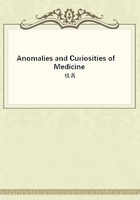
第62章
There are cases in which, through the ignorance of the midwife or the physician, prolapsed pelvic organs are mistaken for afterbirth and extracted. There have been instances in which the whole uterus and its appendages, not being recognized, have been dragged out. Walters cites the instance of a woman of twenty-two, who was in her third confinement. The midwife in attendance, finding the afterbirth did not come away, pulled at the funis, which broke at its attachment. She then introduced her hand and tore away what proved to be the whole of the uterus, with the right ovary and fallopian tube, a portion of the round ligament, and the left tube and ovarian ligament attached to it. A large quantity of omentum protruded from the vulva and upper part of the vagina, and an enormous rent was left. Walters saw the woman twenty-one hours afterward, and ligated and severed the protruding omentum. On the twenty-eighth day, after a marvelous recovery, she was able to drive to the Royal Berkshire Hospital, a distance of five miles. At the time of report, two years and six months after the mutilation, she was in perfect health.
Walters looked into the statistics of such cases and found 36accidental removals of the uterus in the puerperium with 14recoveries. All but three of these were without a doubt attended by previous inversion of the uterus.
A medical man was tried for manslaughter in 1878 because he made a similar mistake. He had delivered a woman by means of the forceps, and, after delivery, brought away what he thought a tumor. This "tumor" consisted of the uterus, with the placenta attached to the fundus, the funis, a portion of the lateral ligament, containing one ovary and about three inches of vagina.
The uterus was not inverted. A horrible case, with similar results, happened in France, and was reported by Tardieu. Abrutal peasant, whose wife was pregnant, dragged out a fetus of seven months, together with the uterus and the whole intestinal canal, from within 50 cm. of the pylorus to within 8 cm. of the ileocecal valve. The woman was seen three-quarters of an hour after the intestines had been found in the yard (where the brute had thrown them), still alive and reproaching her murderer.
Hoffman cites an instance in which a midwife, in her anxiety to extract the afterbirth, made traction on the cord, brought out the uterus, ovaries, and tubes, and tore the vulva and perineum as far as the anus.
Woodson tells the story of a negress who was four months pregnant, and who, on being seized with severe uterine pains in a bath, succeeded in seizing the fetus and dragging it out, but inverting the uterus in the operation. There is a case recorded of a girl of eighteen, near her labor, who, being driven from her house by her father, took refuge in a neighboring house, and soon felt the pains of child-birth. The accoucheur was summoned, pronounced them false pains, and went away. On his return he found the girl dying, with her uterus completely inverted and hanging between her legs. This unfortunate maiden had been delivered while standing upright, with her elbows on the back of a chair. The child suddenly escaped, bringing with it the uterus, but as the funis ruptured the child fell to the floor. Wagner pictures partial prolapse of the womb in labor.
It would too much extend this chapter to include the many accidents incident to labor, and only a few of especial interest will be given. Cases like rupture of an aneurysm during labor, extensive hemorrhage, the entrance of air into the uterine veins and sinuses, and common lacerations will be omitted, together with complicated births like those of double monsters, etc., but there are several other cases that deserve mention. Eldridge gives an instance of separation of the symphysis pubis during labor,--a natural symphysiotomy. A separation of 3/4 inch could be discerned at the symphysis, and in addition the sacroiliac synchondrosis was also quite movable. The woman had not been able to walk in the latter part of her pregnancy. The child weighed 101/2 pounds and had a large head in a remarkably advanced stage of ossification, with the fontanelles nearly closed. Delivery was effected, though during the passage of the head the pubes separated to such an extent that Eldridge placed two fingers between them. The mother recovered, and had perfect union and normal locomotion.
Sanders reports a case of the separation of the pubic bones in labor. Studley mentions a case of fracture of the pelvis during instrumental delivery. Humphreys cites a most curious instance.
The patient, it appears, had a large exostosis on the body of the pubes which, during parturition, was forced through the walls of the uterus and bladder, resulting in death. Kilian reports four cases of death from perforation of the uterus in this manner.
Schauta pictures such an exostosis.
Chandler relates an instance in which there was laceration of the liver during parturition; and Hubbard records a case of rupture of the spleen after labor.